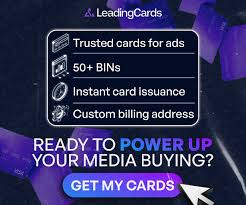
How to Create a Website: A Step-by-Step Guide
In today’s digital age, having a website is essential for businesses, entrepreneurs, and anyone looking to establish a personal brand. Whether you’re starting a blog, an online store, or a portfolio site, this comprehensive guide will walk you through the process of how to create a website for affiliate marketing https://affdays.com/post_articles/18551 from scratch.
Step 1: Define Your Purpose and Goals
The first step in creating a website is to clearly define its purpose. Ask yourself what you want to achieve with your website. Is it to sell products, showcase your work, or provide information? Defining your goals will guide the rest of the process.
Step 2: Choose a Domain Name
Your domain name is your website’s address on the internet. Choose a name that is memorable, relevant to your content, and easy to spell. Once you have a few ideas, check the availability of the domain using a domain registration service.
Step 3: Select a Web Hosting Provider
Web hosting is where your website files are stored and made accessible on the internet. There are numerous hosting providers out there, each offering various plans and features. Compare options based on factors such as uptime, customer support, and scalability. Popular hosting providers include Bluehost, SiteGround, and HostGator.
Step 4: Choose a Website Building Platform
There are various platforms available for building your website. The choice largely depends on your technical skills and the complexity of your site. Here are some popular options:
- WordPress: A powerful and flexible content management system (CMS) suitable for blogs, e-commerce, and more.
- Wix: A user-friendly website builder with drag-and-drop functionality, ideal for beginners.
- Squarespace: Known for its stunning templates, Squarespace is great for portfolios and creative businesses.
- Shopify: A dedicated e-commerce platform for those looking to create an online store.
Step 5: Design Your Website
Once you have chosen a platform, it’s time to design your website. Start by selecting a template or theme that aligns with your brand identity. Customize the layout, colors, fonts, and images to create a unique look. Ensure that the design is user-friendly and responsive, meaning it looks good on both desktop and mobile devices.

Step 6: Create Content
Content is fundamental to your website’s success. Develop high-quality, engaging content that resonates with your target audience. This may include blog posts, product descriptions, images, videos, and more. Remember to optimize your content for search engines (SEO) by incorporating relevant keywords, using proper headings, and adding meta tags.
Step 7: Implement Site Functionality
Depending on your goals, you may need to add various functionalities to your website. This could include:
- E-commerce capabilities for online stores.
- Contact forms for customer inquiries.
- Social media integration to boost engagement.
- Analytics tools to track traffic and user behavior.
Step 8: Test Your Website
Before launching your website, conduct thorough testing. Check for broken links, typos, and ensure all site functionality is working as intended. Test the website on various devices and browsers to ensure compatibility.
Step 9: Launch Your Website
Once you’re satisfied with your website, it’s time to go live! Inform friends, family, and your target audience about your new site. Utilize social media and email marketing to create buzz around your launch.
Step 10: Promote and Maintain Your Website
After launching, it’s essential to promote your website continuously. Utilize SEO strategies, social media marketing, and online advertising to attract visitors. Also, invest time in maintaining your website by updating content, fixing issues, and improving functionality.
Conclusion
Creating a website may seem daunting, but by following these steps, you can successfully build a robust online presence. Remember to stay updated with the latest trends and technologies to keep your website relevant and engaging. Good luck on your journey in the digital realm!
